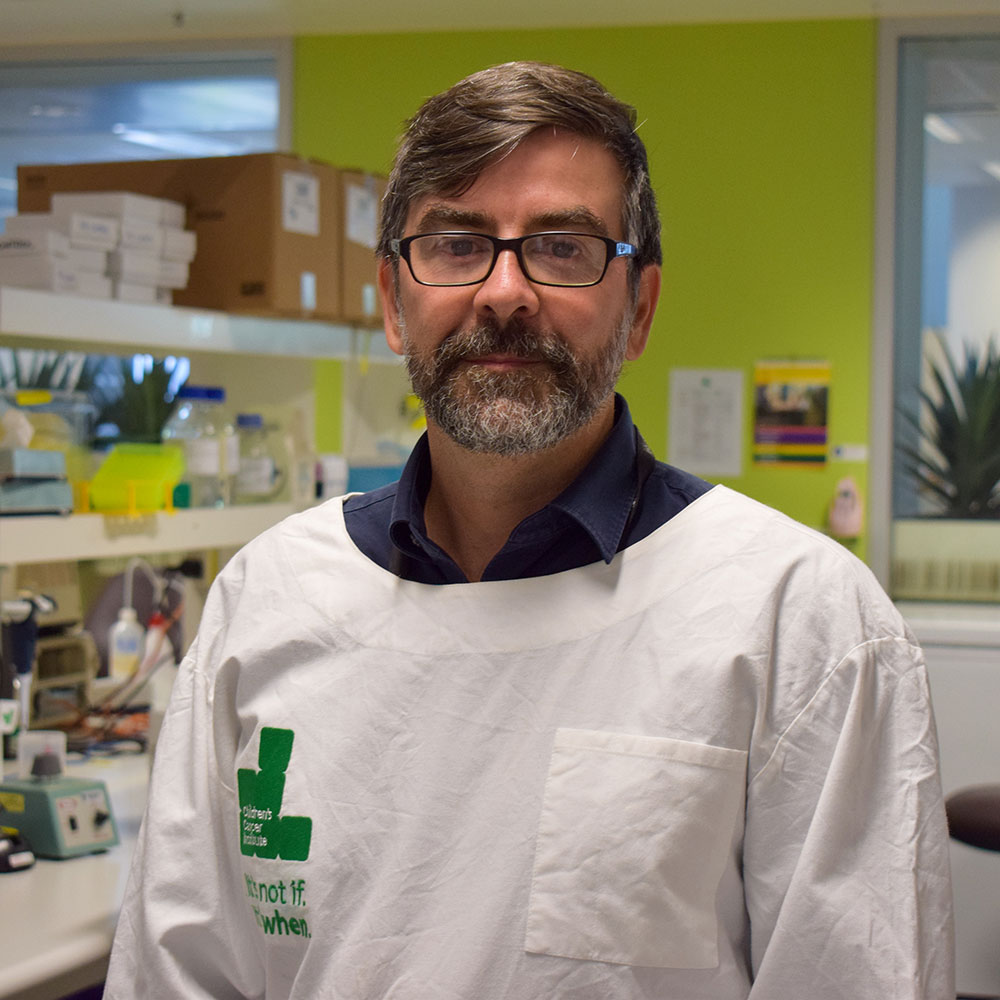One of our key strengths at Children’s Cancer Institute is our ability to take new therapies all the way from the laboratory to the clinic, where they can directly benefit children with cancer. This involves a multi-stage journey, from discovery to clinical trial and beyond. A good example of this is the work of our Experimental Therapeutics team who develop new treatments for neuroblastoma, the most common tumour diagnosed in very young children.

Neuroblastoma accounts for about 15 per cent of all childhood cancer deaths in Australia, and high-risk neuroblastoma - aggressive, difficult-to-treat neuroblastoma - has a survival rate of less than 50%, making it critical that we progress our discoveries into treatments for kids as quickly as possible"
- Professor Michelle Haber AM
The discovery of DFMO
Cancer cells need molecules called polyamines to drive their growth and spread. To make polyamines, the cancer cells need a gene called ODC1. A while back, a drug called DFMO was discovered that blocks the activity of ODC1, limiting the amount of polyamines cancer cells could make - so-called ‘polyamine depletion’ therapy. However, early results of DFMO treatment were disappointing.
A major breakthrough came when our research team was able to show that combining DFMO with standard chemotherapy had a much greater effect on neuroblastoma than using DFMO on its own. This work led to a joint Australia-US Phase I/II clinical trial in children with relapsed neuroblastoma, launched in 2015 at Sydney Children’s Hospital in Australia as well as 14 hospitals across North America.

The results of this early phase clinical trial were very promising, showing that the combination treatment was well tolerated and led to tumour shrinkage and extended survival in a number of patients. These results have now led to a major international trial being undertaken by the Children’s Oncology Group (USA), the world’s largest children’s cancer study group, in over 100 hospitals worldwide.
The limitations of DFMO
Over time, it has become clear that while DFMO-based therapy can help stop neuroblastoma cells making polyamines, the cells are able to compensate for this by taking up more polyamines from the environment around them. Our research team has therefore expanded its work on polyamine inhibition strategies.
Recently, the team found that a newly available drug called AMXT 1501 can be added to the DFMO/chemotherapy combination to block the uptake of polyamines by neuroblastoma cells. This approach of simultaneously blocking the synthesis and uptake of polyamines effectively starves the tumour cells of polyamines, significantly reducing cancer growth.


This new combination represents a new and potent way to target neuroblastoma, and potentially other childhood cancers as well. We are now working with Aminex to develop a children’s formulation of AMXT1501 so that once the initial adult trial is complete, we can open a clinical trial in children."
- Associate Professor David Ziegler
The next step
The DFMO/AMXT 1501 combination is currently being tested in the USA in adult patients with a range of cancers, in a clinical trial run by Aminex Therapeutics, the company that developed AMXT 1501. Working with Aminex to lead the introduction of this new combination treatment into clinical trials for children is Associate Professor David Ziegler, paediatric oncologist at the Sydney Children’s Hospital and a Group Leader at Children’s Cancer Institute.
Declan's story
Everyone who ever met Declan was touched by his wisdom, determination, and unfailing sense of humour. He fought neuroblastoma with everything he had, even taking part in a groundbreaking clinical trial.
News & updates

Potential new treatment strategy for high-risk neuroblastoma

Research suggests promising new treatment for neuroblastoma

Australian research paves way for new cancer therapy












